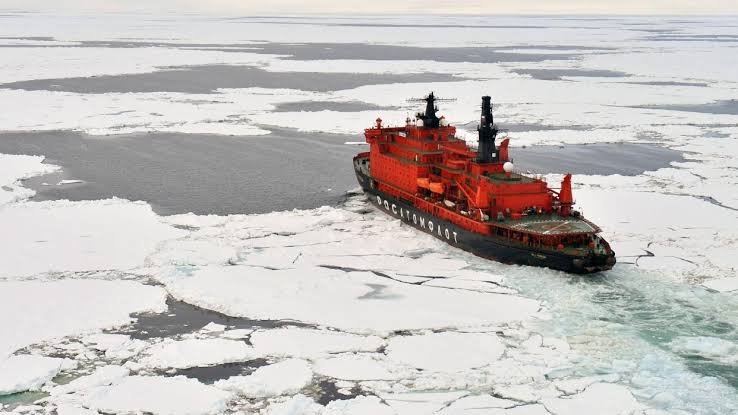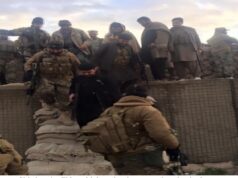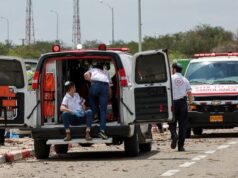Russia going for a Massive Development of its Arctic Zone

Transportation along the Northern Sea Route grew by nine times since 2014 from four million to 38 million metric tons said Russian President Vladimir Putin said at the plenary session of the International Arctic Forum.
The cargo traffic of the Northern Sea Route, from the Kara Strait to the Bering Strait, increased progressively over the last decade.
This is five times more than the Soviet-time record. Transportation along the Northern Sea Route is likely to grow to 70-100 mln metric tons by 2030.
Russia as a sovereign country has realized that to trade with India, China and nations of Indo Pacific and BIMSTEC it needs its own merchant fleet in the Arctic region and the Indo Pacific including cargo and rescue vessels.
Also transportation has to be supported both over northern seas and inland waterways of Arctic regions.
Russia has thus recognized that it’s own domestic shipbuilding capacity alone is not sufficient now for these goals.
Therefore Russia is open to proposals of foreign companies on marine logistics joint ventures in the Arctic zone.
“We are also open here to establishment of joint ventures. International logistics operators can beneficially invest in such companies not only by capital and technologies but also by a portion of the merchant fleet,” the president said.
“The stronger our positions are, the more significant achieved results will be, the more opportunities we will have to launch global international projects in the Arctic region with participation of friendly countries.
Probably, Western nations also if they show interest in cooperative efforts. I am confident the time will definitely come for such projects also,” added the president.
To start with Russia is likely to commission new generation icebreakers and strengthen its positions in this sphere soon. Russia already has the largest icebreaker fleet globally.
Now they are going to strengthen these positions, by commissioning new generation icebreakers, including nuclear-powered ones that only Russia has.
Regions of Siberia and Ural will be provided with a railway approach to the Arctic zone in order to reduce the load on the Trans-Siberian Railway.
Implementation of the project of developing the Arctic railway range will be similar to the Eastern range, which comprises Baikal-Amur and Trans-Siberian railways, including upgrade of the railway in the Republic of Komi and the Yamal-Nenets Autonomous District.
Regions of Siberia, Ural, Northwest Russia will have the direct access to the north, to Arctic ports, making it possible to reduce the load on the Trans-Siberian Railway and efficiently use marine transportation.
Arctic and Far North airports definitely require upgrade. Airports of the Far North, especially small ones, require upgrading.
Russia will modernize sixteen airports of the Arctic zone in coming years within the framework of the relevant National Project, including in Salekhard, Arkhangelsk, Naryan-Mar and Vorkuta.
India will surely welcome these developments as the Indo-Arctic trade route, specifically the Northern Sea Route (NSR), is a potential shorter shipping route for India connecting Asia-Pacific, Russia and Europe.
The NSR, also known as the Northeast Passage, as a maritime route in the Arctic Ocean connects the Pacific and Atlantic oceans through the Arctic, primarily traversing the northern coast of Russia offering significant distance and time savings compared to traditional routes.
Thus the NSR offers a potentially shorter route for trade between India and Europe compared to the traditional routes through the Suez or Panama Canals.
India is therefore interested in the NSR to diversify its trade routes and secure energy supplies from Russia.
The NSR will lead to lower shipping costs, faster transit times, and increased trade between India, Russia, and Europe.
The melting of Arctic ice is making the NSR more navigable, potentially opening up new trade opportunities. India has already released its Arctic Policy, aiming to enhance cooperation with the resource-rich and rapidly transforming region, including the NSR.
India and Russia are already discussing ways to cooperate on developing the NSR, including infrastructure development and joint ventures.
India is also focusing on developing the Chennai-Vladivostok Eastern Maritime Corridor, which aims to integrate with the NSR.
India is also exploring linking the International North South Transport Corridor (INSTC) with the NSR to create a more efficient trade route.




